Heres my dress coming down the catwalk at the Dublin show. So proud of my little creation,
keep voting and sharing everyone!!
 Cristobel Balenciaga: Balenciaga was a fashion anarchist
of his time. Having been forced out of Spain during the Spanish Civil war he
opened his couture house in Paris in 1937. He managed to stay in business during the
war but soured to fame in the Post war era.
Christian Dior Himself stated
that "Haute couture is like an orchestra, for which only Balenciaga is the
conductor. The rest of us are musicians, following the directions that he gives
us". His innovation of the female silhouette during the 1950s is amplified
by the awe of his peers. Balenciaga is responsible for the Balloon jacket, an
O-shaped silhouette which formed a cocoon around the upper body to make the
legs and neck appear longer on the figure. His genius also included the baby
doll dress and 'sack dress' of 1957, the
balloon skirt and his seamless use of kimono sleeves in coats. He manifested
the 'Bracelet sleeve' with a seven-eighth length that allowed woman to showcase
their jewellery at its finest. Considering the emphasis on the waistline at the
time and lack of one in his garments allows his influential position to speak
for itself.
Cristobel Balenciaga: Balenciaga was a fashion anarchist
of his time. Having been forced out of Spain during the Spanish Civil war he
opened his couture house in Paris in 1937. He managed to stay in business during the
war but soured to fame in the Post war era.
Christian Dior Himself stated
that "Haute couture is like an orchestra, for which only Balenciaga is the
conductor. The rest of us are musicians, following the directions that he gives
us". His innovation of the female silhouette during the 1950s is amplified
by the awe of his peers. Balenciaga is responsible for the Balloon jacket, an
O-shaped silhouette which formed a cocoon around the upper body to make the
legs and neck appear longer on the figure. His genius also included the baby
doll dress and 'sack dress' of 1957, the
balloon skirt and his seamless use of kimono sleeves in coats. He manifested
the 'Bracelet sleeve' with a seven-eighth length that allowed woman to showcase
their jewellery at its finest. Considering the emphasis on the waistline at the
time and lack of one in his garments allows his influential position to speak
for itself.
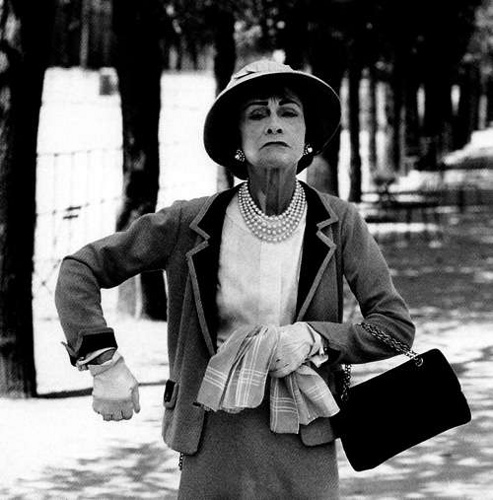 Gabriel 'Coco' Chanel: Chanel's fame was unaffected during World War
II however their famous headquarters at 31 Rue de Cambon closed when Germany
invaded France. This left Chanel with the opportunity for a post war revival upon their return to the market. Chanel detested Dior's new look which brought back
the necessity for a corset which she had worked so hard to abolish in the 1930s. Chanel was provoked
in to action arguing 'There are too many men in this business, they don't know how
to make clothes for women. How can a woman wear a dress that's cut so she can't
lift up her arm to pick up the telephone?'.She was willing to fight to salvage the new woman she had
laboured as her own. This struggle brought about the invention of the Chanel
suit, an iconic piece of fashion history. Her winter 1954 collection saw her
rework the Chanel tweed in the form of a timeless female suit. The slim skirt
and collarless jacket oozed femininity, a gold chain was sewn in to the jacket
hem to create a fluid line from the shoulder. The uniform for the emerging
working woman was born.
Gabriel 'Coco' Chanel: Chanel's fame was unaffected during World War
II however their famous headquarters at 31 Rue de Cambon closed when Germany
invaded France. This left Chanel with the opportunity for a post war revival upon their return to the market. Chanel detested Dior's new look which brought back
the necessity for a corset which she had worked so hard to abolish in the 1930s. Chanel was provoked
in to action arguing 'There are too many men in this business, they don't know how
to make clothes for women. How can a woman wear a dress that's cut so she can't
lift up her arm to pick up the telephone?'.She was willing to fight to salvage the new woman she had
laboured as her own. This struggle brought about the invention of the Chanel
suit, an iconic piece of fashion history. Her winter 1954 collection saw her
rework the Chanel tweed in the form of a timeless female suit. The slim skirt
and collarless jacket oozed femininity, a gold chain was sewn in to the jacket
hem to create a fluid line from the shoulder. The uniform for the emerging
working woman was born. 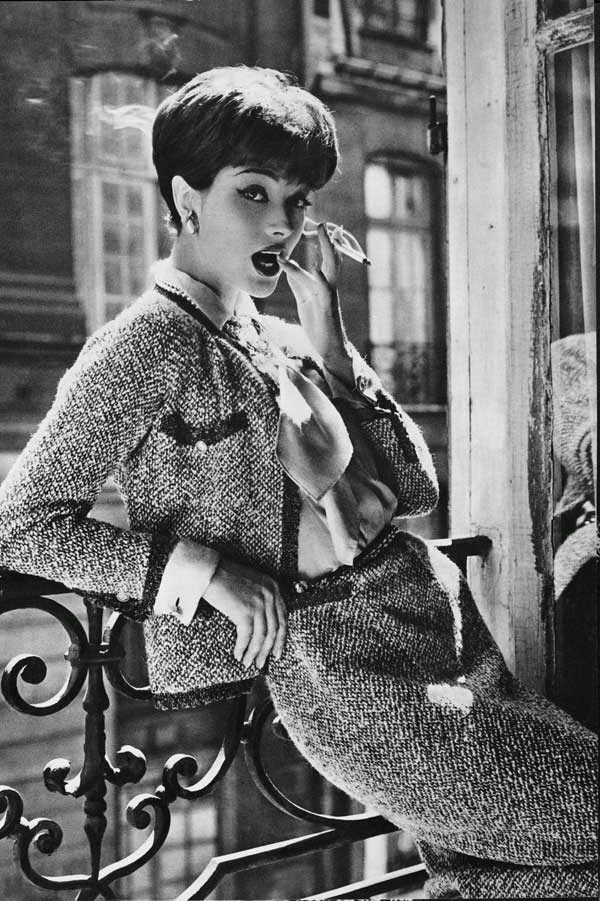 |
| Chanel Suit 1958 |
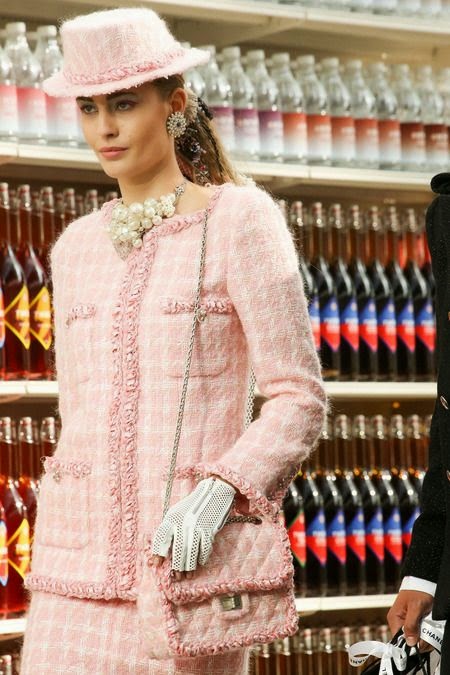 |
| Chanel Suit AW 2014 |

 Christian Dior: Dior set the scene
for the 1950s fashion world. On February 12th 1947 Dior sent out invitations to
the showcase of his new collection and let loose a fashion sensation. The 'Corolle'
collection (so-called after the delicate petals at a flowers centre) was
luxurious, romantic and abundant in fabric. It held no attributes of wartime
rationing or improvising and brought femininity back to wardrobes exhausted by
the war. Dior wanted to "make elegant woman more beautiful and Beautiful
woman more elegant" sighting that "Europe had enough of falling bombs,
now it wants to set off fireworks". Dior himself started the celebrations
with his new silhouette, sloping shoulders, narrow waists and full hips. His
romantic feminine image was achieved with corsets called 'Waspies' and skirts
stuffed with petticoats. His collections aimed to surprise and please inventing
the A-Line silhouette with its triangle shape and the H-Line silhouette with
its slim jacket-skirt combination. Dior's legacy includes the Coolie hat,
Trapeze coat and the Hobble skirt. Even in todays fashion world Dior is synonymous with elegance and innovation.
Christian Dior: Dior set the scene
for the 1950s fashion world. On February 12th 1947 Dior sent out invitations to
the showcase of his new collection and let loose a fashion sensation. The 'Corolle'
collection (so-called after the delicate petals at a flowers centre) was
luxurious, romantic and abundant in fabric. It held no attributes of wartime
rationing or improvising and brought femininity back to wardrobes exhausted by
the war. Dior wanted to "make elegant woman more beautiful and Beautiful
woman more elegant" sighting that "Europe had enough of falling bombs,
now it wants to set off fireworks". Dior himself started the celebrations
with his new silhouette, sloping shoulders, narrow waists and full hips. His
romantic feminine image was achieved with corsets called 'Waspies' and skirts
stuffed with petticoats. His collections aimed to surprise and please inventing
the A-Line silhouette with its triangle shape and the H-Line silhouette with
its slim jacket-skirt combination. Dior's legacy includes the Coolie hat,
Trapeze coat and the Hobble skirt. Even in todays fashion world Dior is synonymous with elegance and innovation. The 'New Look' of the 1950s brought
back the classic female form. Cinched in waistlines and full skirts with petticoats
shaped the silhouette of the time. Skirts were made from simple fabric like
gingham and printed cotton for daytime and for night-time they featured layers
of chiffon or rayon in bold colours like baby blue and lime green. Petticoats
were stiffened with starch or a sugar solution to create form and movement
under the circle skirts. For a more glamorous look petticoats were made using
nylon tulle which gave a softer effect for eveningwear. In contrast to the
voluminous circle skirt was the hobble or pencil skirt. A slim straight skirt
that featured the tiny waistline but no gathers or pleats, just a simple slit
in the back to allow for movement.
The 'New Look' of the 1950s brought
back the classic female form. Cinched in waistlines and full skirts with petticoats
shaped the silhouette of the time. Skirts were made from simple fabric like
gingham and printed cotton for daytime and for night-time they featured layers
of chiffon or rayon in bold colours like baby blue and lime green. Petticoats
were stiffened with starch or a sugar solution to create form and movement
under the circle skirts. For a more glamorous look petticoats were made using
nylon tulle which gave a softer effect for eveningwear. In contrast to the
voluminous circle skirt was the hobble or pencil skirt. A slim straight skirt
that featured the tiny waistline but no gathers or pleats, just a simple slit
in the back to allow for movement. |
| Roger Vivier Stilettos |

 The freedom of the post-war era stimulated
the emerging Youth culture. Teenagers no longer felt the need to do as their
parents did and set their own agenda bringing style with them. America led the
rest of the teenage world with two dominant figures emerging: the Preppies and
the Greasers. A Preppy teen's wardrobe featured Capri pants or pedal pushers,
scoop neck blouses, tight sweaters or cardigans and three quarter length
sleeved blouses with a neckerchief. The greasers sported denim jeans and
leather biker jackets a symbol of rebellion that terrified the older
generation. Music and film greatly influenced the fashion of teen culture and
the fabrics used in clothing production.
The freedom of the post-war era stimulated
the emerging Youth culture. Teenagers no longer felt the need to do as their
parents did and set their own agenda bringing style with them. America led the
rest of the teenage world with two dominant figures emerging: the Preppies and
the Greasers. A Preppy teen's wardrobe featured Capri pants or pedal pushers,
scoop neck blouses, tight sweaters or cardigans and three quarter length
sleeved blouses with a neckerchief. The greasers sported denim jeans and
leather biker jackets a symbol of rebellion that terrified the older
generation. Music and film greatly influenced the fashion of teen culture and
the fabrics used in clothing production. |
| Dovima modelling a Balenciaga gown, Perfection |
 |
| Dior's new look army |
 Mainbocher: As the first American Designer to
open a couture house in Paris Bocher performed a miracle and shot to fame in
the middle of a Depression. Originally from Chicago he had no formal training
but became a master of the bias cut accredited by Madeleine Vionnet herself. He
began his career as an illustrator for Harper's Bazaar and later became editor
of French Vogue before deciding to enter the world of design. Perhaps it was
his origins that kept him afloat as his designs were very simple but famously
expensive. He designed the wedding dress of Wallis Simpson upon her marriage to
King Edward VIII and shot to fame overnight. His business was unaffected by
outbreak of World War II and he brought his work back home tom America where a
crowd was eagerly awaiting his arrival. His clothes were made almost entirely
by hand until Bocher separated from the world of fashion at age 80.
Mainbocher: As the first American Designer to
open a couture house in Paris Bocher performed a miracle and shot to fame in
the middle of a Depression. Originally from Chicago he had no formal training
but became a master of the bias cut accredited by Madeleine Vionnet herself. He
began his career as an illustrator for Harper's Bazaar and later became editor
of French Vogue before deciding to enter the world of design. Perhaps it was
his origins that kept him afloat as his designs were very simple but famously
expensive. He designed the wedding dress of Wallis Simpson upon her marriage to
King Edward VIII and shot to fame overnight. His business was unaffected by
outbreak of World War II and he brought his work back home tom America where a
crowd was eagerly awaiting his arrival. His clothes were made almost entirely
by hand until Bocher separated from the world of fashion at age 80.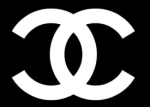
 Coco Chanel: Gabrielle Chanel defied the odds as
an impoverished orphan to become Coco Chanel an iconic fashion legend. Known as
Coco, Chanel introduced the concept of timeless pieces to the fashion world.
Working from a palette of mainly beige, black and white Chanel invented the
'little black dress', quilted handbags, the tweed suit and the legendary
interlocking double-C of the house of Chanel. Chanel said herself "In order to be irreplaceable one must always be different" which justifies her ignorance of prevailing fashion trends. She
shortened hems, abandoned frills and flounces and abolished the use of the
corset. She gave woman career wardrobes of shorts and trousers inspired by
military uniforms. This new found elegance is ever present today under the
guidance of Karl Lagerfeld as head of Chanel who maintains Chanel's Iconic
style.
Coco Chanel: Gabrielle Chanel defied the odds as
an impoverished orphan to become Coco Chanel an iconic fashion legend. Known as
Coco, Chanel introduced the concept of timeless pieces to the fashion world.
Working from a palette of mainly beige, black and white Chanel invented the
'little black dress', quilted handbags, the tweed suit and the legendary
interlocking double-C of the house of Chanel. Chanel said herself "In order to be irreplaceable one must always be different" which justifies her ignorance of prevailing fashion trends. She
shortened hems, abandoned frills and flounces and abolished the use of the
corset. She gave woman career wardrobes of shorts and trousers inspired by
military uniforms. This new found elegance is ever present today under the
guidance of Karl Lagerfeld as head of Chanel who maintains Chanel's Iconic
style.
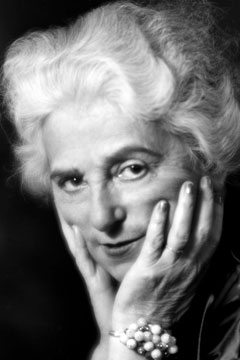 Madeleine Vionnet: Known as the 'Queen of the bias cut'
Vionnet
Madeleine Vionnet: Known as the 'Queen of the bias cut'
Vionnet 
 |
| Jean Harlow an original diva |
 |
| Harpers Bazaar 1933 |
![[3841385110_671da3d2ce_o.jpg]](http://3.bp.blogspot.com/_kNo1dXol7a4/St7oBs7QlDI/AAAAAAAAA1o/879G3_TvFoU/s640/3841385110_671da3d2ce_o.jpg)
